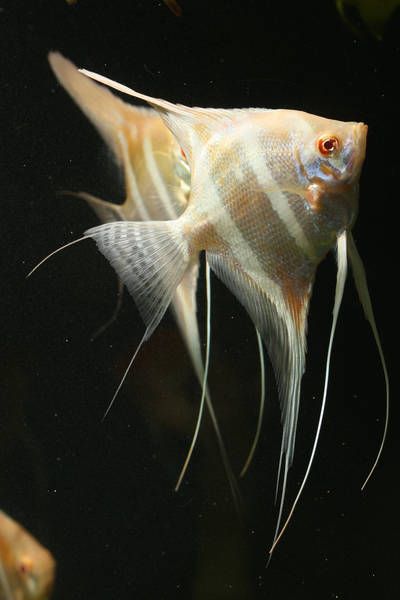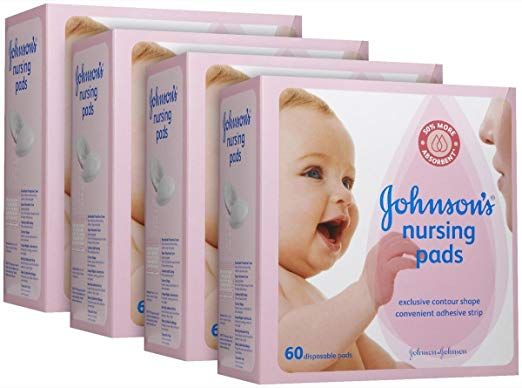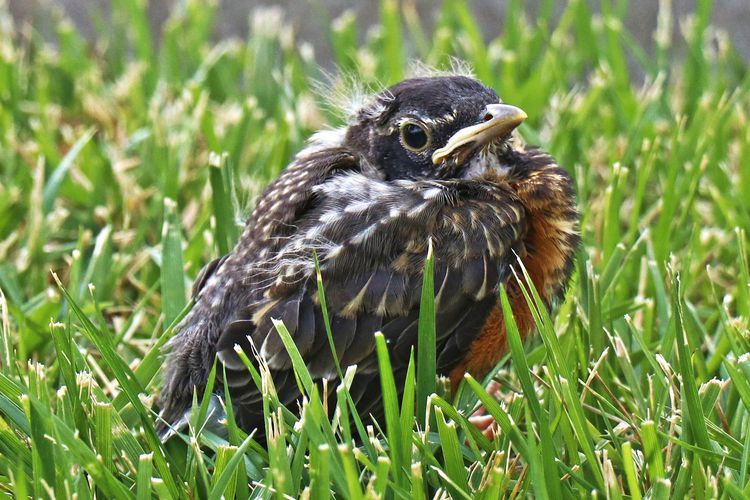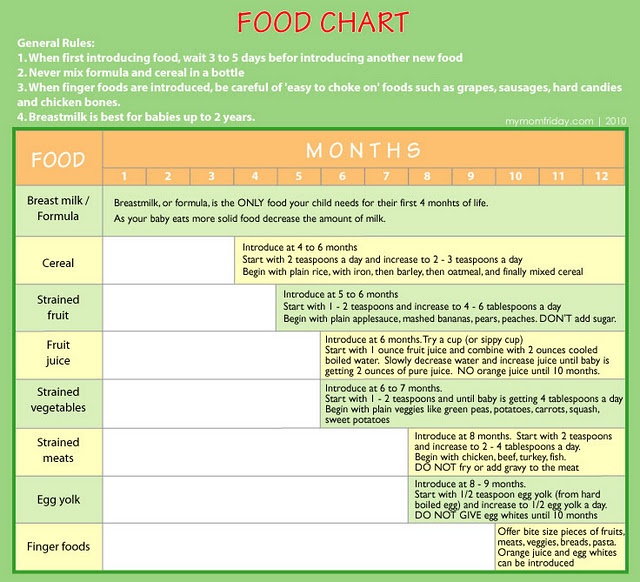How do rats feed their babies
the Rat Report
This article is from the Rat Health Care booklet. Order one today! Check out the info at Rat Books
by Debbie “The Rat Lady” Ducommun
updated 6/22/17
Note about wild rats: Please see the info at the bottom of the page.
Baby rats are about 1 ½ inches (3.8 cm) long at birth
(not counting the tail), and are pink and hairless. House mice are only about
½ to 1-inch (2.2-3.5 cm) long at birth. Deer mice, which is a common
wild species found as orphans, are about 1 to 1 ¼-inch (2.5-2.3 cm),
long at birth. All of these species
start getting fur at about one week of age. At two weeks old their eyes open
and they have a very short coat of fur. At three weeks of age their fur gets
fluffy. At about four weeks old their fur flattens down again. From this point
on, their appearance doesn’t change much, just their size. It is normal
for infant rodents to be uncoordinated because their nervous system isn’t
completely developed. At three weeks they start to be more and more
coordinated.
It’s very difficult to hand raise a baby rat (or mouse) who is less than a week old (a pinkie who doesn’t have any hair yet). The best option is to find a nursing rat to serve as a foster mother. As long as the babies are about the same age as her own, mother rats are almost always willing to adopt orphans. The best way to locate a foster mother is to contact a pet shop that sells reptiles and breeds rats for snake food. Offer to buy a nursing mother. You can also try contacting local breeders or rat rescues, and you will find a list of both on this website.
The best way to introduce new babies to a foster mom is to
take the mom out of the cage, then put the orphans in with her own babies,
rubbing them all together to get the scent of her own babies on the orphans.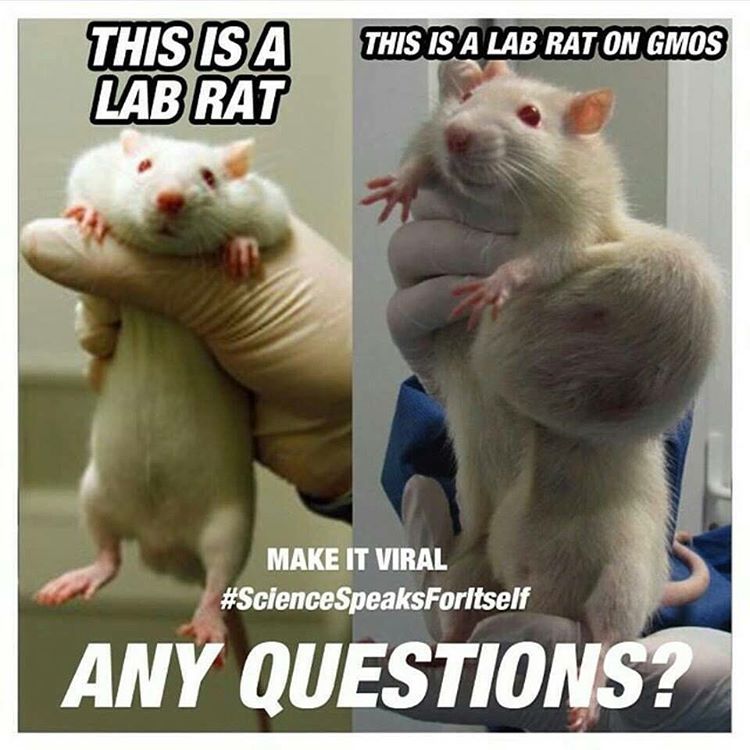 If
you get a mom who no longer has babies, ask for some of her dirty bedding to
put in her new cage, and rub your babies in that. Putting them together in a
small cage will help her accept them faster.
If
you get a mom who no longer has babies, ask for some of her dirty bedding to
put in her new cage, and rub your babies in that. Putting them together in a
small cage will help her accept them faster.
If a foster mother isn’t available, the only alternative to save an orphan is to raise him yourself. When attempting to raise an infant rat, there are three elements to consider: warmth, hygiene, and diet.
The best place to keep an orphaned rat before his eyes open is in a small cardboard box on a piece of crumpled felt or fleece (fabric with no threads that can get wrapped around the baby’s legs.) Infant rats can climb better than you might think. Be sure to use a box with a cover and weight it down so the baby can’t climb out.
Until their fur becomes fluffy (at about 3 weeks of age),
baby rats can’t keep themselves warm and you must give them
supplemental heat. You can
supply warmth for the baby with a heating pad (the best option, but be sure it doesn’t
have an automatic shut-off feature), a light bulb, or something like a hot
water bottle or an product designed to be heated in the microwave. Of course, a
hot water bottle or microwaved object will need to be reheated periodically. It’s best to keep a thermometer
next to the baby so you know exactly what temperature he is experiencing. Use a small weather thermometer, not a
medical thermometer, as the latter can’t record drops in temperature. Keep the temperature around 100-102
degrees F (37.78-38.89 C). This will feel warm to your hand, but not hot.
Higher temperatures can be fatal.
But if the baby gets too cold, that too can be fatal.
You can
supply warmth for the baby with a heating pad (the best option, but be sure it doesn’t
have an automatic shut-off feature), a light bulb, or something like a hot
water bottle or an product designed to be heated in the microwave. Of course, a
hot water bottle or microwaved object will need to be reheated periodically. It’s best to keep a thermometer
next to the baby so you know exactly what temperature he is experiencing. Use a small weather thermometer, not a
medical thermometer, as the latter can’t record drops in temperature. Keep the temperature around 100-102
degrees F (37.78-38.89 C). This will feel warm to your hand, but not hot.
Higher temperatures can be fatal.
But if the baby gets too cold, that too can be fatal.
Use heating pads with extreme care as they can get very
hot. Start on the low setting and
gradually increase as needed until the inside of the box is the right
temperature. Put crumpled cloth in the box so the baby can crawl up away from
the heat if necessary. Only use cloth that can’t fray, such as fleece,
felt or t-shirt material. At two weeks of age you can start gradually reducing
the temperature. Light bulbs can
also get very hot. Make sure the light bulb is not too close to the baby
because it can actually cook him.
You absolutely must use a thermometer if you use a light bulb for
warmth.
Only use cloth that can’t fray, such as fleece,
felt or t-shirt material. At two weeks of age you can start gradually reducing
the temperature. Light bulbs can
also get very hot. Make sure the light bulb is not too close to the baby
because it can actually cook him.
You absolutely must use a thermometer if you use a light bulb for
warmth.
Infant rats
can’t go to the bathroom by themselves. They’re stimulated to go only when
rubbed around the genitals and anus.
This is so the mother can ingest the waste and keep the nest clean. You need to stimulate the baby to pee
every time you feed him. He may not
poop every time, but he should poop at least every third feeding. Use a piece of toilet paper or tissue
and gently flick it across the genital area like the mother would lick him for
at least 30 seconds after every meal to take care of this important hygiene
matter. If you fail to do so, the
rat will die of toxic poisoning from his own wastes. Baby poop is normally soft and yellow or
brown until they start eating solid food.
Baby poop is normally soft and yellow or
brown until they start eating solid food.
You can clean the baby of spilled food after meals with a damp cotton ball or by dipping him in a warm bath up to his neck and rubbing away the food. Be sure to dry him well. Also give him a full massage after every meal just as his mother would lick him to stimulate his circulation and help him to grow.
It is not unusual for orphaned baby rats to lose their fur or develop peeling skin. Don’t worry about it. The skin will heal and the fur will eventually grow back, usually before wild rats are ready to be released. If by some chance it doesn’t, you must wait until it does grow in before releasing them.
Abnormal Noises
If the baby starts making a clicking sound when breathing
that means that he has developed pneumonia and will die without treatment with
amoxicillin. Pneumonia can also cause the baby to become weak, cold, and
inactive. Mix a 250 mg capsule in 7.5 ml of formula (stir well) and give the
baby one tiny drop of the mixture 3 times on the first day (spread equally
throughout the day and night) and then twice a day for the next 7-14 days,
depending on how quickly the symptoms clear up. For more info on getting and using
amoxicillin, see my article about Respiratory Disease.
Pneumonia can also cause the baby to become weak, cold, and
inactive. Mix a 250 mg capsule in 7.5 ml of formula (stir well) and give the
baby one tiny drop of the mixture 3 times on the first day (spread equally
throughout the day and night) and then twice a day for the next 7-14 days,
depending on how quickly the symptoms clear up. For more info on getting and using
amoxicillin, see my article about Respiratory Disease.
The Formula
If necessary, until you buy the correct formula, for the first day you can give the baby dilute sugar water, made with 1 cup hot water ¾ teaspoon sugar, and ¼ teaspoon of salt. Stir until the sugar and salt are completely dissolved. Discard this solution after 8 hours because it can quickly grow bacteria.
I recommend using human infant formula. The nutritional requirements for rats
are closer to that of humans than dogs or cats, and if you look at the
information on the components of rat milk at the bottom of the page,
you’ll see that the percentage of protein and fat in the human formula
most closely matches that of rat milk. Be sure to buy the powdered formula, and most rats prefer the soy
formula, not the milk-based formula. All human formula contains iron, and all
babies need iron, so don’t worry when it says “Now with iron”
on the label. Note: The Esbilac
Small Animal Goat’s Milk formula is formulated just like puppy Esbilac
and is much higher in protein and fat, so I do not recommend it.
Be sure to buy the powdered formula, and most rats prefer the soy
formula, not the milk-based formula. All human formula contains iron, and all
babies need iron, so don’t worry when it says “Now with iron”
on the label. Note: The Esbilac
Small Animal Goat’s Milk formula is formulated just like puppy Esbilac
and is much higher in protein and fat, so I do not recommend it.
Here is the schedule for mixing the formula to give their system a chance to get used to the new formula slowly (this is especially critical for pinkies):
1st feeding 4 parts water to 1 part powder (eg. 2 teaspoons water to ½ teaspoon powder)
2nd feeding 3.5 parts water to 1 part powder (eg. 1¾ teaspoons water to ½ teaspoon powder)
3rd feeding 3 parts water to 1 part powder (eg. 1½ teaspoons to ½ teaspoon powder)
4th feeding 2.5 parts water to 1 part powder (eg. 1¼ teaspoons water to ½ teaspoon powder)
5th feeding 2 parts water to 1 part
powder (eg. 1 teaspoon water to ½ teaspoon powder) Then use this mixture
from now on unless the baby has problems. See below.
1 teaspoon water to ½ teaspoon powder) Then use this mixture
from now on unless the baby has problems. See below.
If a baby gets diarrhea, gets bloated or becomes dehydrated, go back to the mixture for the 2nd feeding and progress on from there. To test for dehydration, pinch the skin on the back and see how long it takes for it to go back down. If it takes more than a full second, the baby is dehydrated.
If the baby is still bloated after going back to the more dilute formula, then you can give the baby a homeopathic remedy called Nux vomica, which is good for digestive problems. You can get it at any health food store. Do not touch the pellets with your hands. Tip out one pellet into a ultra-clean dish and dissolve it in a bit of water. Then suck this up into a clean syringe and squirt it into the baby’s mouth.
To mix the formula, first
warm the water to about 105°F (which will feel hot). It will cool as you mix in the powder
and you want it to end up being about 100°F (slightly warm). You can measure out the amount of water
in a tiny container and heat it in a microwave for a few seconds, or you can heat
a quantity of water in the microwave or on the stove and then measure out the
correct amount of water. Then mix
in the powder. If you need to feed
several babies, you need to set the container of formula in another bowl of
warm water to keep the formula warm.
A mug warmer (cheap at Wal-mart) is a great tool to keep the bowl of
water warm while feeding.
It will cool as you mix in the powder
and you want it to end up being about 100°F (slightly warm). You can measure out the amount of water
in a tiny container and heat it in a microwave for a few seconds, or you can heat
a quantity of water in the microwave or on the stove and then measure out the
correct amount of water. Then mix
in the powder. If you need to feed
several babies, you need to set the container of formula in another bowl of
warm water to keep the formula warm.
A mug warmer (cheap at Wal-mart) is a great tool to keep the bowl of
water warm while feeding.
The amount to give at each
feeding is 5% the body weight (in grams) as cc (a ml is the same as a
cc). So you multiply the baby’s weight in grams by 0.05. So
if a baby weighs 6 g, it should eat 0.3 ml at each meal. (6 X 0.05 =
0.3) A baby who weighs 18 g should eat 0.9 cc. This is critical for pinkies, so you
must have a gram scale to keep track of their weights. You can buy an electronic postal scale
that will weigh in grams at a stationery store.
You can buy an electronic postal scale
that will weigh in grams at a stationery store.
Feeding
Newborn rats normally nurse about every 3 hours. You’ll need to feed pinkies every 3-4 hours during the day and once in the middle of the night for the first week and every 4-5 hours the second week. Feeding too often will prevent proper digestion.
However, getting the formula in baby rats can be a challenge. No matter what method you use, it can take 24-36 hours to get the baby used to nursing on the new nipple and the new taste of the formula, so don’t worry if it seems like the baby doesn’t want to eat at first. Just keep trying. Hold the baby upright, grasping it firmly at the neck. He or she will be very wiggly so you need to hold on pretty tightly.
They tend to grow very slowly until they are old enough to
eat out of a dish and then they usually grow very quickly.
Unlike some other animals, such as baby squirrels, the risk of a baby rat aspirating (inhaling) formula is very very low, which makes them pretty easy to raise. However, it is very common for baby rats to suck the formula up their nose. If this happens you will know because it will actually come out the nostrils. Keep an eye on the nose and stop feeding if you see a whisp of white at the nostrils. Use a tissue to wipe as much formula from the nose as possible. The baby will try to sneeze it out. It will take the baby a little bit of time to clear the formula from the nasal cavities, so be patient and continue to wipe off any formula that appears in the nostrils. After a few minutes the baby should be ready to nurse again.
One of the best methods of feeding baby rats is to get an IV
catheter or small rubber feeding tube from your vet. These will fit onto the tip of a 1 cc
syringe which will help you carefully monitor the amount a baby eats.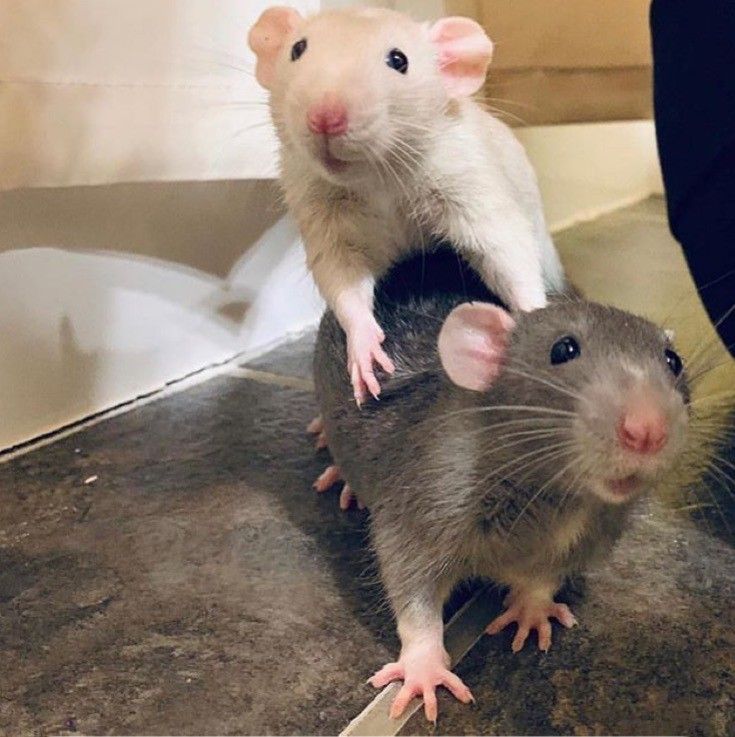 You will have to cut the feeding tube
shorter but it will still be about 4 inches long. The end of the catheter or
tube is about the same size as mother’s nipple, but you will still need
to slowly squirt the formula into the baby’s mouth. You can also use an eye dropper with a
narrow tip. Be careful not to
overfill the baby’s mouth which can cause them to get the formula up
their nose. Don’t try to use a syringe larger than 1 ml because it will
be too difficult to control the amount of formula you squeeze out.
You will have to cut the feeding tube
shorter but it will still be about 4 inches long. The end of the catheter or
tube is about the same size as mother’s nipple, but you will still need
to slowly squirt the formula into the baby’s mouth. You can also use an eye dropper with a
narrow tip. Be careful not to
overfill the baby’s mouth which can cause them to get the formula up
their nose. Don’t try to use a syringe larger than 1 ml because it will
be too difficult to control the amount of formula you squeeze out.
Below is the set-up I use. The catheter is longer than
I’d like, but that’s how long it is before it tapers down. Notice
how I’m holding the syringe. You will have much better control of it in
this position rather than trying to push the plunger with your thumb. Also see that I have the small container
of formula sitting on an electric mug warmer (set on high), which keeps it a
perfect temperature for feeding. The formula cools down quickly after you suck it into the syringe, so
you don’t want to suck up too much at a time. I do about 0.2 ml at a time. This baby
is a 2-week-old Norway rat.
The formula cools down quickly after you suck it into the syringe, so
you don’t want to suck up too much at a time. I do about 0.2 ml at a time. This baby
is a 2-week-old Norway rat.
This 13-day-old roof rat baby is licking/sucking the catheter.
Another method is to use a tiny piece of rag and form a nipple from one corner. Start by dipping the “nipple” in the formula and squeezing drops into the baby’s mouth. Once the baby starts sucking on the rag, you can drip formula little by little onto the rag with a dropper so you don’t have to remove the nipple from the baby’s mouth. You can also try using a small craft paint brush, or clean eye make-up sponge, the little one on a stick.
You must have the rag, sponge or eye dropper in the
baby’s mouth when he sucks so the baby sucks on the
“nipple.” DO NOT just
drip the formula into his open mouth because he will swallow too much air.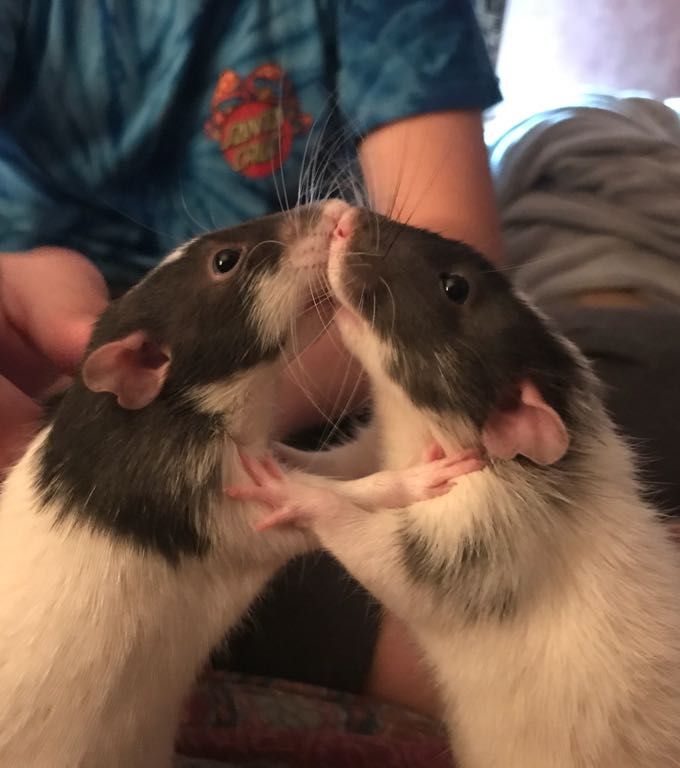 This
can be fatal because rats cannot burp.
Air bloating the stomach must be sucked out with a needle and syringe
through the body and stomach wall.
This
can be fatal because rats cannot burp.
Air bloating the stomach must be sucked out with a needle and syringe
through the body and stomach wall.
Mixed formula can be refrigerated for 24 hours before you need to discard it. Warm only the amount of formula you need to feed. One way is to place it in a small container sitting in a cup of warm water. You can also microwave the formula if you are very very careful and only do it for 3-5 seconds at a time. Test the temperature of the formula on your wrist before feeding it. It should feel warm but not hot. When I’m feeding more than 1 or 2 babies at a time, I keep the formula warm on an electric mug warmer on high.
Once when I was hand raising a wild roof rat who was just
under 2 weeks of age, I thought he hated the formula because he would lick a
few drops and then open his mouth as if he was gagging. I finally realized he was opening his
mouth to begin power sucking! Infants
use their tongue and upper palate to create the suction.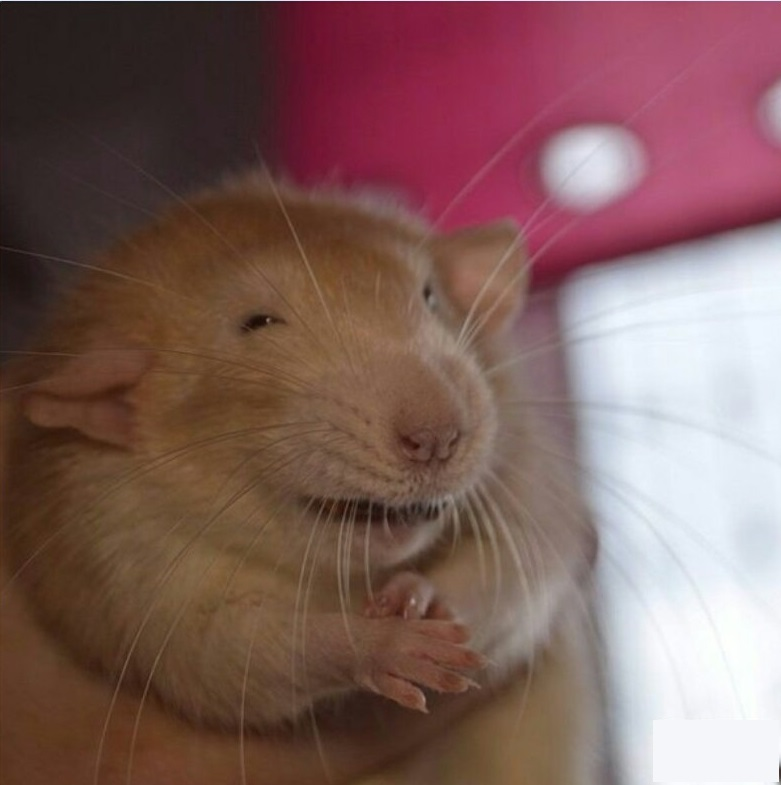 Once I got the eye dropper properly
positioned up against the roof of his mouth he would suck down about 0.75-1 ml
in about 5-10 seconds! All I had to
do was lightly squeeze the eye dropper bulb.
Once I got the eye dropper properly
positioned up against the roof of his mouth he would suck down about 0.75-1 ml
in about 5-10 seconds! All I had to
do was lightly squeeze the eye dropper bulb.
This 13-day-old roof rat is power sucking!
Moving from the Nipple to a Dish
When the baby is a week old he will start to get hair. At two weeks of age his eyes will open
and he will start to grow teeth.
When his eyes have been open for 3 days he will be able to start eating
formula out of a little dish. The best thing to use for a dish at first is a
tiny lid from a bottle of molasses or mustard. You must place this on a flat magnet
(upside-down) to keep the baby from tipping over the lid. The first time you put formula in the
dish, do it just after feeding the baby so he can investigate it when
he’s not really hungry. Otherwise, he will literally dive into the dish and get the formula up
his nose. It will still take him a
little while to learn to lick from the dish and you will need to give him a
bath after almost every meal. After
a few days, if you are feeding a group of babies, you can switch from the
catsup lid to a larger baby food jar lid.
Once he seems to know how to eat out of the dish, offer fresh formula in
the dish at least 3-4 times a day.
At this point, the baby should be able to urinate and defecate on his
own, but it doesn’t hurt to continue to stimulate elimination before putting
down fresh formula.
Otherwise, he will literally dive into the dish and get the formula up
his nose. It will still take him a
little while to learn to lick from the dish and you will need to give him a
bath after almost every meal. After
a few days, if you are feeding a group of babies, you can switch from the
catsup lid to a larger baby food jar lid.
Once he seems to know how to eat out of the dish, offer fresh formula in
the dish at least 3-4 times a day.
At this point, the baby should be able to urinate and defecate on his
own, but it doesn’t hurt to continue to stimulate elimination before putting
down fresh formula.
Once the baby is eating well out of the lid, you can stop
the night and bottle feedings. You
can also start offering foods such as rat blocks, dry oatmeal and other grains,
and little pieces of fruit and veggies. (Soft food can be very messy for
babies, and they can eat solid food fine at this point. ) From the age of 2 weeks the baby will
gradually start pooping and then peeing on his own. Depending on the
individual, you can stop stimulating him to go to the bathroom when he is 2 ½-3
weeks old.
) From the age of 2 weeks the baby will
gradually start pooping and then peeing on his own. Depending on the
individual, you can stop stimulating him to go to the bathroom when he is 2 ½-3
weeks old.
Weaning
Until their fur becomes fluffy (at about 3 weeks of age), baby rats can’t keep themselves warm and you must continue to give them supplemental heat. By 3 weeks of age the rat will be eating mostly solid food, although he wouldn’t be weaned yet, so you should still be offering some formula. At this age you need to move the baby from a box into an escape-proof cage with a water bottle. When a domestic rat baby is about 3-4 weeks old, it is a good idea to get him or her another rat companion of about the same age. Rats are very social and need to learn how to get along with other rats as a baby. At 4 weeks you can completely wean your baby and stop giving formula, and congratulate yourself on a job well done!
Special Notes for Orphaned Wild Rats
The risk of disease when raising an orphaned baby rat is
low. Most diseases that can be
transferred to humans would quickly kill a baby rat. However, I recommend you use good
hygiene and be sure to thoroughly wash your hands after handling the baby.
Most diseases that can be
transferred to humans would quickly kill a baby rat. However, I recommend you use good
hygiene and be sure to thoroughly wash your hands after handling the baby.
For an orphaned wild rat, the best thing is to release it
when it is old enough. This is especially true if you raise more than one
together as they will be more bonded to each other and less tame. If you really, really want to keep a
wild rat or mouse as a pet it will take a lot of extra work. The most
common wild rat in California and the southern states is the roof rat which
doesn’t make a good pet. Roof rats are very hyper and agile and
even when tame tend to be very nervous and flighty. In the other states, the most common
wild rat is the Norway rat, the ancestor of the domestic rat and they can make
pretty good pets if they are handled and socialized enough, but you must always
remember they are wild and might bite if frightened.
If you decide you want to keep a wild rat as a pet, then you need to handle it as much as possible. This is especially true if you hand raise a litter of wild rats. Because they have each other to bond to, they will not bond to you unless you spend a great deal of time handling them. In the case of more than one orphaned wild rat, it is best to plan to release them.
If you decide to keep a wild rat as a pet, it is a good idea to raise it with another rat as a companion. Introduce the baby wild rat to a 4-week-old domestic rat when the wild rat is about 3-4 weeks old. By the time a wild rat is about 6 weeks old, it will probably be too late for it to accept a domestic rat as a companion.
You can release wild rats when they are 6 weeks old. You do not need to separate males from
females, even if you must keep them longer. Wild rats do not reach sexual maturity
as young as domestic rats, in fact, probably not until 12 weeks. The best place
to release a roof rat is an area near a permanent water source, such as a
creek, pond, lake, or river, where there are a lot of trees. This is also a good place to release a
wild Norway rat, but a Norway rat does not need trees, just a source of water,
a place to hide, and a source of food.
Some water sources will also be a source of food, supplying fish, frogs,
snails, etc. When the babies are
4-6 weeks old, you need to get them used to eating foods they will find in the
wild. Offer them live mealworms
from a pet shop (in a jar lid to keep them from crawling away), nuts in the
shell, and a variety of different fruits, veggies, and grains.
The best place
to release a roof rat is an area near a permanent water source, such as a
creek, pond, lake, or river, where there are a lot of trees. This is also a good place to release a
wild Norway rat, but a Norway rat does not need trees, just a source of water,
a place to hide, and a source of food.
Some water sources will also be a source of food, supplying fish, frogs,
snails, etc. When the babies are
4-6 weeks old, you need to get them used to eating foods they will find in the
wild. Offer them live mealworms
from a pet shop (in a jar lid to keep them from crawling away), nuts in the
shell, and a variety of different fruits, veggies, and grains.
Here is how to release a wild rat. When the baby is about 3 weeks old, give
him a little box about 6″ square in his cage for a nest box. Cut a small rat-sized door in it for
him. This box should be small
enough to easily fit through the door of the cage. This will be the rat’s safe
place. You will notice that he will
get more and more wild as he gets older and is no longer a little baby and when
you approach the cage he will likely run and hide in his box. You can give him shredded paper and
dried grass to build a nest in the box.
When it’s time to release the rat, reach in the cage and remove
the box, using your hand to block the exit. Have packing tape ready and put a piece
over the opening to seal it. Also tape closed the lid of the box, and you may
also need to tape over any other entrances the rat has chewed in the box. Place the nest box inside another closed
box, just in case the rat gets out of the nest box. Drive to the release location and place
the nest box in place hidden by bushes, under a fallen tree, etc. Slowly peel off the tape. Leave some rat blocks or seeds next to
the box for a temporary food source while the rat learns his new environment.
This will be the rat’s safe
place. You will notice that he will
get more and more wild as he gets older and is no longer a little baby and when
you approach the cage he will likely run and hide in his box. You can give him shredded paper and
dried grass to build a nest in the box.
When it’s time to release the rat, reach in the cage and remove
the box, using your hand to block the exit. Have packing tape ready and put a piece
over the opening to seal it. Also tape closed the lid of the box, and you may
also need to tape over any other entrances the rat has chewed in the box. Place the nest box inside another closed
box, just in case the rat gets out of the nest box. Drive to the release location and place
the nest box in place hidden by bushes, under a fallen tree, etc. Slowly peel off the tape. Leave some rat blocks or seeds next to
the box for a temporary food source while the rat learns his new environment.
The time of day for the release is not critical.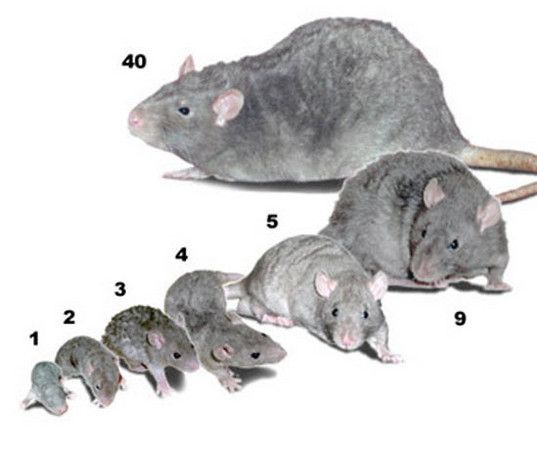 Although
rats are mostly nocturnal, there are more predators out at night too, so during
the day is probably the safest time to release a wild rat.
Although
rats are mostly nocturnal, there are more predators out at night too, so during
the day is probably the safest time to release a wild rat.
This is the cage I raise wild rats in. It measures 14" X 20" X 24" tall. It’s not a good cage for domestic rats, because the upper floor is made of ½" X 1" mesh, which pets rats can catch their feet in. However, wild baby rats have much smaller feet. (It’s also too small for domestic rats to actually live in.) There is also a wire mesh bottom, which I cover with rabbit food as litter. This wire bottom makes the cage almost escape-proof. As you can see, I have equipped it with an exercise wheel, wood sticks to climb on and a nest box. This is the box I will release the babies in when it’s time.
Rat Milk Components
Range Throughout Lactation (%)
Day Lactose Fat Protein
0 2
- 2.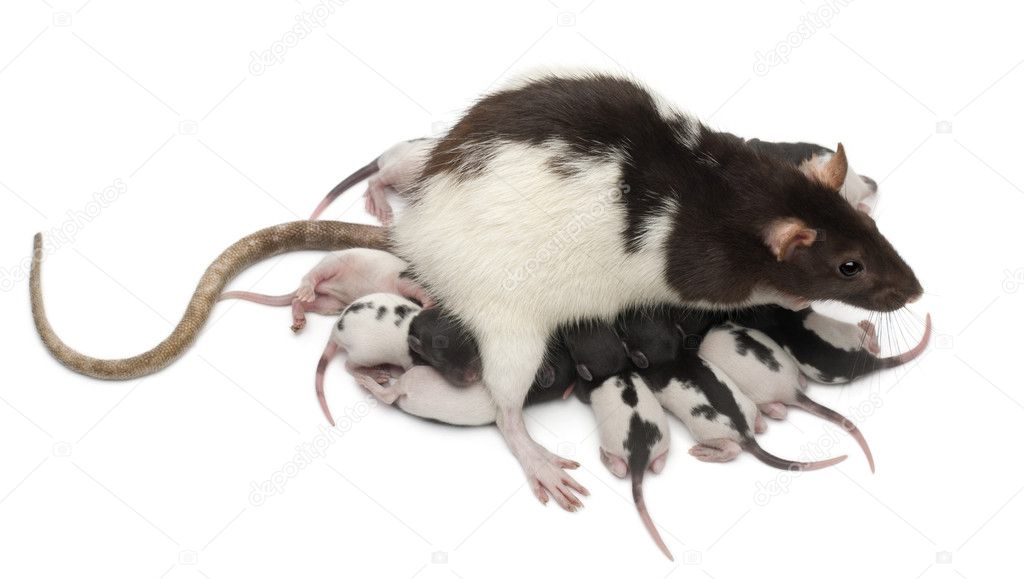 6 20
- 28.6 7
- 8.6
6 20
- 28.6 7
- 8.6
5 2.4 - 3 5.5 - 15 6.5 - 7.4
10 3 - 3.7 7 - 18 8 - 8.6
15 4 - 4.5 9 - 19 8.3 - 10
20 3.5 - 4.7 8 - 14 8 - 10
Rat Milk Summary
Protein range: 6.5 to 10%
Fat range: 7 to 28.6%
Comparison with commercial formulas:
Human Soy Baby Formula—best match
Protein 12%
Fat 25%
Esbilac (for puppies)—too high in protein and fat
Protein 33%
Fat 40%
Rat of the Week | News | Rat Info | Adopt a Rat
Reviews | Rat Books | Merchandise | Special Events
Meet the Ratlady | Links | Home
Rat Fan Club 857 Lindo Lane Chico, CA 95973 (530) 899-0605 ratlady@ratfanclub. org
org
Copyright 1999-2017
Maternal Behaviors – Rat Guide
Post partum (after birth) maternal behaviors in the female rat are primarily brought on by hormonal changes in estrogen, progesterone, oxytocin, and prolactin. Environmental factors, individual line issues, and physiological factors can alter, disrupt, or inhibit these normal behaviors.
Exposure to babies will maintain maternal behaviors and the removal of the offspring will cause it to decline. It is important to note that attentive and nurturing maternal behaviors can make a big difference in the learning abilities and well being of a litter. According to studies, babies that receive more “loving” attention show higher levels of brain development than those raised by indifferent mothers.(Meany, 2000)
Maternal behavior can be broken down into several categories such as: birth behavior, care of infants, suckling behavior, human interaction, and also negative maternal behavior.
Mom and You
It is important to mention first that the mother rat may not be receptive to having you near her offspring. This sometimes will be very intense at birth and will taper off as the babies get older.
This sometimes will be very intense at birth and will taper off as the babies get older.
Maternal aggression towards humans is going to vary from rat to rat. With some mothers aggression is totally nonexistent and mom will let you handle babies with no stress or biting. Other moms may get very aggressive and will attack and/or bite.
During the first week after birth the babies do not need to be checked or handled very often. If the mother is aggressive you can distract her or lure her out of the cage with food while you quickly check, count, or photograph the offspring.
To avoid injury, be sure to approach any female with a new litter with great care.
Some factors that can affect maternal aggression:
- Genetics (certain lines show higher maternal aggression)
- Socialization of mother
- Number of litters the mother has already had
- Environmental Stress (noise, movement, etc.)
- Bonding between handler and mother
- Health of mother
Birth Behavior
As the mother rat begins to give birth her level of estrogen increases and progesterone declines. Research has shown that even though these hormonal changes help in facilitating maternal behavior, it is actually the increase of oxytocin that brings on rapid onset of maternal behavior.
Research has shown that even though these hormonal changes help in facilitating maternal behavior, it is actually the increase of oxytocin that brings on rapid onset of maternal behavior.
During labor the mother will move around and then either lay or crouch as each pup is born. She then cleans her vulva, gently removes the birth sac from the newborn, and licks the pup.
The mother rat will then ingest the placenta. This is known as placentophagy and is a healthy practice used by most mammalian mothers. The placenta contains high levels of prostaglandin which stimulates involution of the uterus and small amounts of oxytocin which eases birth stress and stimulates lactation.
Care of Infants
Retrieval
Once the babies are all born the mother will generally retrieve all of them and put them in the nest where she can keep them warm and safe. She will usually pick them up by the nape of the neck or the back.
At times a nursing pup will get dragged from the nest as the mother is exiting and dropped outside. The mother generally will notice this and return it to the nest. If a mother does not notice, you can carefully return the pup to the nest or place it at the opening of the nest for retrieval.
The mother generally will notice this and return it to the nest. If a mother does not notice, you can carefully return the pup to the nest or place it at the opening of the nest for retrieval.
Once the babies eyes are open and they are walking the mother generally will not actively retrieve them.
Licking
There are several different licking behaviors that you see the mother perform on the babies. The first is licking the body to clean and nurture the babies. The second is anogenital licking which stimulates the pup to urinate and defecate. Without this stimulation waste would build up in the system and the pup would not be able to survive.
In early handling of short duration the mother will lick the babies as soon as they are returned to her. If the time the babies are separated is lengthy the mother may show reduced attention to them and not lick them much, if at all.
Nursing Behaviors
After the babies are born the mother will hover over the litter making her nipples accessible to them. Due to the fact that newborns may suckle up to 18 hours a day, the mother will spend quite a bit of time in the nest in the first week after birth. During initial nursing bouts you may see the mother licking and rearranging the babies before she settles in to let them feed.
Due to the fact that newborns may suckle up to 18 hours a day, the mother will spend quite a bit of time in the nest in the first week after birth. During initial nursing bouts you may see the mother licking and rearranging the babies before she settles in to let them feed.
Once the litter reaches 14-15 days old their eyes are opening and they are able to eat portions of her food. The mother is spending less time in the nest nursing them. You may see mothers, during the third-fourth week, trying their best to escape the increasing demands of their offspring.
Litter Relocating
At times a mother rat may move her litter from place to place within her environment. Usually this is due to stress and/or perceived danger. She is likely trying to locate an area for her litter that she feels is safe. Often this behavior will occur after the babies have been handled or after cage cleaning.
If a mother is moving the entire litter try to leave her alone and reduce environmental stressors such as noise and activity. Keep in mind that the constant relocating of the babies may cause injury. You may want to remove hammocks and tubes to insure that the mother does put the babies in a high place where they may fall and be injured.
Keep in mind that the constant relocating of the babies may cause injury. You may want to remove hammocks and tubes to insure that the mother does put the babies in a high place where they may fall and be injured.
Litter Splitting
It is not unusual for a female with a large litter to split the babies into 2 piles and nurse them separately. This behavior will actually give all of the offspring a chance to feed. The female rat typically has 12 nipples. In a larger litter (13-22) the female rat may be able to ensure more offspring survive by splitting them up. You will need to check both nests to make sure that she is feeding each group sufficiently.
The Darker Side of Maternal Behavior
Not every rat is going to follow the typical birth behaviors. And although some behaviors may be alarming, all behaviors do have rationality whether or not we understand..
Scattering
Scattering is the act of leaving babies strewn away from the nest. It is hypothesized that this may be a behavior as we see in wild rats when the litter is threatened. According to that theory, a predator would be attracted to, and snatch, the scattered babies while leaving the rest of the nest unharmed. Some moms tend to accidentally scatter their babies as they leave the nest to feed and drink.
According to that theory, a predator would be attracted to, and snatch, the scattered babies while leaving the rest of the nest unharmed. Some moms tend to accidentally scatter their babies as they leave the nest to feed and drink.
Placing the babies back in the nest and making sure the surroundings are quiet and stress free may help to eliminate this maternal behavior.
Disfigurement and Injury of Neonates
Occasionally a check of a new born litter reveals babies that are bitten, missing partial limbs, or sections of their tails. This is referred to as birth trauma. Often this is a result of the mother assisting in a pup’s birth by pulling on it with her teeth.
Some mothers will accidentally damage their babies while they are removing the birth sac or during retrieval and carrying.
Babies can also be harmed by the mother if she is in with another rat who is stealing the babies or if she is highly stressed.
Litter abandonment
Litter abandonment can occur for several different reasons. The foremost reason is that the mother is unable to lactate and/or is lacking maternal drive.
The foremost reason is that the mother is unable to lactate and/or is lacking maternal drive.
Babies from these litters can be fostered by another mother who has a new litter. A mother with an older litter may not accept them, and even if she does, will be lacking the initial colostrum that they need. These babies may, however, be supplemented with a simulated colostrum formula. Another option, if there is no foster mother, is to hand feed the litter. This is difficult and time consuming. Generally the rate of survival for hand raised rat neonates is very low.
Individual Pup Abandonment
It is always alarming when an individual pup is singled out and abandoned. Unless there is something obviously wrong, the confusing part is trying to determine why. All too often we have seen offspring who were incredibly runted or maimed that the mother still fed and cared for. In the fancy we have seen babies with genetic diseases that the mother never abandoned.
It does not seem that having “something wrong” with the pup is enough to lead to abandonment. It may be that the mother senses the pup’s eminent death, is culling her own litter to make it manageable, or has some unknown aversion to the pup.
It may be that the mother senses the pup’s eminent death, is culling her own litter to make it manageable, or has some unknown aversion to the pup.
Sometime a foster mother will take an abandoned pup in or an owner can hand raise it.
Post Mortem Cannibalism
It is not uncommon for a mother rat to consume a stillborn pup or one that has died after birth. This usually occurs in the first few days after birth. It may be a way of keeping the nest “clean” or the mother may perceive the dead pup as a high protein meal.
Not all mothers cannibalize dead offspring. Some will simply push the body to the side of the nest or remove it and place it somewhere else within the cage. Others will keep the dead pup in the nest with the live ones.
Maternal Infanticide
The term infanticide is defined as the killing of an infant. It is hard to determine, unless you actually witness it, whether or not a female has committed infanticide or if the pup has died naturally.
It is not typical for mother to kill their own offspring.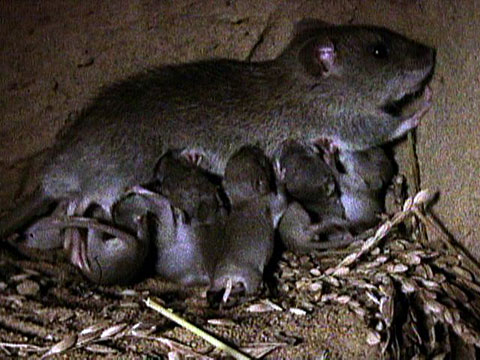 Mother rats may kill the offspring of other females and virgin females will often kill babies (suggesting that hormones play an active role in determining female behavior to offspring). Yet there certainly are scenarios when mothers kill their own.
Mother rats may kill the offspring of other females and virgin females will often kill babies (suggesting that hormones play an active role in determining female behavior to offspring). Yet there certainly are scenarios when mothers kill their own.
Some hairless mothers who are unable to lactate may kill their entire litter. Hairless females with diminished lactation may cull their own litter one by one until they reach the number of babies that they can provide nourishment for.
Typically infanticide is committed during the first few days of life and the killing of an individual pup is more likely than the killing of an entire litter.
Some factors that may lead to maternal infanticide include: hormonal imbalances, environmental stress, hunger, protein deficiencies, vitamin deficiencies, and obesity.
For more information see the Rat Behavior article: Infanticide in Norway Rats
References
- Ingestion of Afterbirth Appears to Promote Maternal Behavior in Mammals.
 (2005, February 11). Retrieved December 18, 2008, from http://www.buffalo.edu/news/fast-execute.cgi/article-page.html?article=71210009.
(2005, February 11). Retrieved December 18, 2008, from http://www.buffalo.edu/news/fast-execute.cgi/article-page.html?article=71210009. - Peters, L., & Kristal, M. (1983). Suppression of infanticide in mother rats. J Comp Psychol, 97(2), 167-77. Retrieved December 18, 2008, from the Medline database.
development, care and feeding of baby rats
Newborn rat pups are a cute and sometimes shocking surprise for a rodent owner. Novice rat breeders sometimes face the problem of an unexpected pregnancy in their decorative rat, this happens after visiting their relatives with a pet, with an accidental joint keeping of heterosexual rodents or covering a female with a wild male, sometimes pregnant individuals are already sold in pet stores.
An inexperienced owner of a domestic rat may not even suspect about the imminent replenishment of the pet's family, in this case, the discovery of a whole brood of naked squeaking lumps in the cage of his pet may come as a complete surprise to him. Sometimes, the owners deliberately knit a female to get rat offspring at home. 9Ol000
Sometimes, the owners deliberately knit a female to get rat offspring at home. 9Ol000
What newborn rat pups look like
Of course, newborn rats cause tenderness and a surge of tenderness, but now all worries about a nursing mother and her children fall on the shoulders of the owner of the rodent.
The baby rat looks very cute and touching, reminiscent of a pink baby doll made of celluloid with pink skin and a large rounded head. Little rats are completely devoid of hair, are born blind and deaf, although the sense of smell and instincts in these touching babies are already developed. By smell, the cubs find the mother's nipple, gorge themselves on nutritious milk and fall asleep near the warm belly of the female.
On the large head of a small rat, through the translucent skin, you can see huge dark balls of eyes, which indicates the dark color of the animal. If the contours and color of the baby’s eyes cannot be determined, then the rodent’s coat will be light: red, white or yellow.
If the contours and color of the baby’s eyes cannot be determined, then the rodent’s coat will be light: red, white or yellow.
A newborn rat is very small and defenseless, the weight of a cub at birth is only 3-5 g, the body length of females reaches 5-6 cm, males - up to 9 cm.
IMPORTANT!!! It is impossible to touch newborn rats. The baby's body is very fragile, one awkward movement can kill the animal. The rat will also not accept a baby with the smell of human hands; the owner's excessive curiosity can end in the death of the cub.
How a rat takes care of rat pups
Rodents by nature are excellent mothers, a rat spends the whole day with rat pups, gently takes care of, feeds and takes care of babies. The female covers her numerous brood with her body all day, warming and protecting the cubs. The warmth of the body of a rat and frequent feeding with nutritious milk stimulate the development of all organ systems of small animals, it is almost impossible to feed and save the life of newborn babies without mother's care.
Sometimes, a rat brings litter to 15-20 rat pups , some of the stronger cubs often find themselves near the nipple with milk, the rest of the rat pups may die without feeding. In such cases, in the second week, shortly fed nimble babies can be placed in a separate container with a constant temperature of 39 ° C maintained in it; for this purpose, you can use a heating pad or bottles of warm water.
Rat pups at birth cannot empty their intestines on their own, the mother often licks the tummies of the babies, stimulating the bowels and removing the faeces of the newborns.
A small rat is an absolutely hairless creature, the body of a tiny animal acquires hair only in the second week of the rodent's life. Decorative rat cubs are not able to maintain a constant body temperature, therefore, without the warm belly of the mother, naked babies cannot physically survive.
If the mother leaves the newborn for a few minutes, the body temperature of the rat pups instantly drops, they stop moving and fall asleep.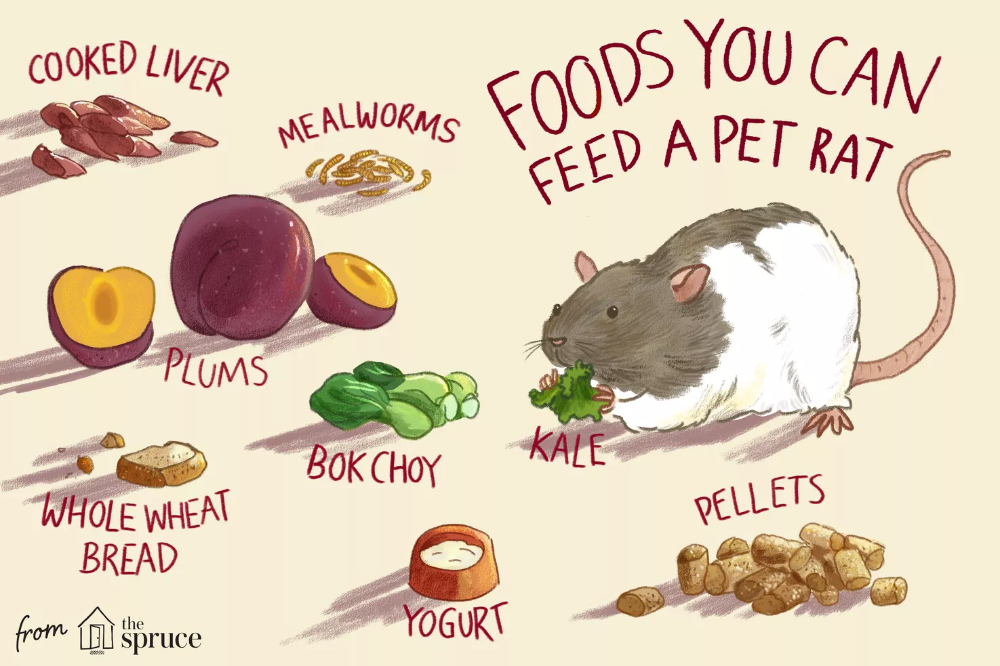 Mommy carefully monitors the body temperature of each baby all day, if necessary, the rat swaps the children.
Mommy carefully monitors the body temperature of each baby all day, if necessary, the rat swaps the children.
The rat gradually reduces the time spent near the children, adapting the newborn to environmental conditions and self-maintaining normal body temperature. If at birth the female practically does not leave a brood, then by the end of the first week, the babies spend a third of their time without a mother, with a further increase in the independent period.
Development of rat pups by day
Newborn rodents grow very quickly, a defenseless blind lump becomes an adult after 4 weeks, puberty of males occurs at 5, and females at 6 weeks. The development of rat pups by day is as follows:
1st day
Immediately after birth, rat pups are naked, pink, blind and deaf babies with underdeveloped limbs and a small tail, who can only squeak, suck and sleep.
3rd-4th day
The ears of the pups open, now the pups can distinguish not only smells, but also sounds.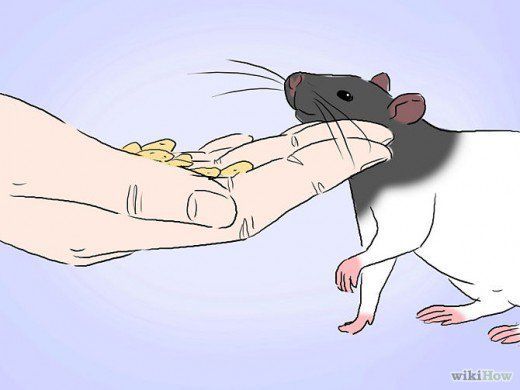
5th-6th day
The bodies of newborns begin to be covered with the first soft hairline, the skin has become flesh-colored with dark spots, the presence of which determines the color of rodents.
Days 8-10
The first teeth erupt in the rats, the babies are already covered with short velor fur, the cubs become very nimble, arrange fights over the mother's nipple, movements are not yet fully coordinated.
Days 12-13
The babies open their eyes, the rat pups explore the territory, actively try to get out of the nest, but the rat diligently returns the children to their original place.
Day 14-16
At this time, secondary sexual characteristics are formed and it is possible to determine the sex of the animals; in females, nipples are visible on the abdomen.
16-18th day
Babies actively begin to try their mother's food, try to gnaw on all the surrounding objects, from this period they can introduce the first feeding of animals.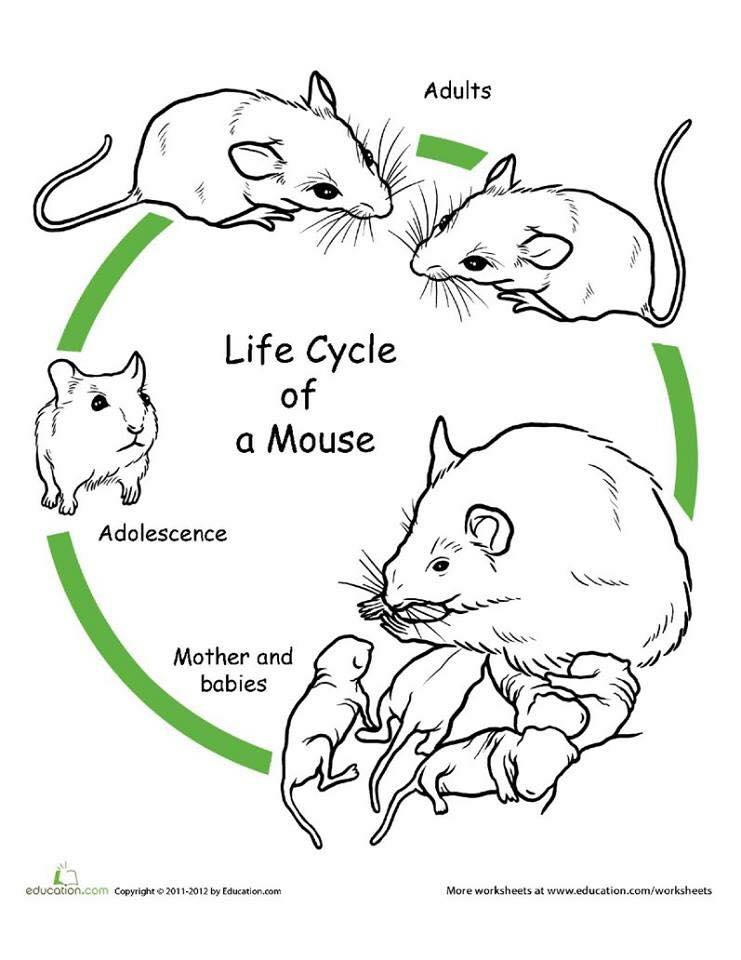
Days 20-27
Cubs are practically independent individuals, feed on adult animals, milk production declines, lactation stops by the 27th day of life of babies. The physiological feature of rat pups is eating during this period the faeces of the female and accustoming them to the mineral composition of the adult diet. The rat stops dragging newborns and takes care of the offspring less and less, accustoming children to independence. Babies are still attached to their mother, it is not recommended to separate them during this period.
28-30th day
The rat pups are already adults, they are curious about everything new, the kids begin to recognize people and play with their owners. In the wild, a month old, rodents already become independent hunters, and provide their own food and shelter.
When rat pups open their eyes
Little rat pups are born absolutely blind and deaf, for the first 12 days of life, the cubs orient themselves only by smell. Later, in adulthood, the rat explores the entire environment with the help of smell. Scientists have proven that episodic memory in rats is arranged like a human one, the animal is able not only to capture and distinguish between various notes of smells, but also to associate situations of their occurrence and manifestation. The first aromas that a newborn feels are the smell of milk and the body of a mother.
Later, in adulthood, the rat explores the entire environment with the help of smell. Scientists have proven that episodic memory in rats is arranged like a human one, the animal is able not only to capture and distinguish between various notes of smells, but also to associate situations of their occurrence and manifestation. The first aromas that a newborn feels are the smell of milk and the body of a mother.
The eyes of rat pups open on the 12th-13th day of life, the babies begin not only to smell, but also to see the world around them. From the moment they open their eyes and gain the ability to see the world around them, rat cubs begin to actively leave the nest and explore new territories. The eyes of rats are located on the sides of the head, such an anatomical feature opens up a wide viewing angle for them. The animal, without turning its head, can look with both eyes in different directions, even up, back and down. In this way, nature saves wild rats from being attacked by predatory animals and birds.
Caring for newborn rat pups
A rat cub is a defenseless touching creature that requires increased care from its mother and owner. The mother will take care of the feeding and hygiene of the babies, the owner needs to properly care for the female and her offspring, without interfering with the physiological processes. To do this, it is desirable to create comfortable conditions for newborn rat pups:
- in no case should you pick up and examine the cubs, the female may abandon or eat the litter due to stress;
- the cage with the brood of rats should be in the quietest, warmest and dryest room;
- the rat cleans the nest on its own, throwing dirty pieces of bedding into the corner of the cage, the owner constantly needs to give the female clean napkins. You can remove used wipes from the cage no earlier than the 8th day of life, without touching the nest. If the rat is worried about cleaning, set it aside;
- watch the door of the cage, the cubs are very nimble after the 8th day and can jump out and crash on the floor, or the female drags the newborns to any quiet corner of the apartment;
- feed the female with nutritious food and keep the drinker full of clean drinking water;
- Carefully introduce healthy complementary foods to babies for the proper development of the digestive system of newborns.

When you can take rat pups in your hands
It is highly not recommended to touch rat pups immediately after birth! A mother can eat a baby with a human smell, and there is also a chance of inadvertently damaging the thin bones of a newborn.
Toward the end of the second week of life, newborns can be taken out of the nest for a short time in the absence of a female, examine the rat pups and determine the sex of the animals. It is advisable to do this in medical gloves or with thoroughly washed hands so that the female does not leave the brood.
From the end of the second week, you can often take the babies out of the cage in the presence of the mother, so that the rat trusts you and does not worry about the children. Rats at this age are unusually nimble and inquisitive, while the female is walking every day, it is desirable to accustom the rats to friendly human communication: gently wear in two palms, stroke, talk in an affectionate voice, wear in the sleeve and in the bosom. Wary tiny animals quickly get used to people, begin to trust them.
Wary tiny animals quickly get used to people, begin to trust them.
IMPORTANT!!! Lack of active close contact with a person at a young age can make a pet fearful or aggressive towards a person.
When it is possible to give rat pups away
From the age of 2 weeks, it is advisable to take the babies often in your arms and give treats from the hands , the animals will get used to do without a mother, remember the smell and voice of the owner. During feeding, the rat can bite the owner, mistaking the finger for a treat. It is absolutely impossible to raise your voice in such cases and scare the baby.
At 5 weeks, males should be separated from their mother in a separate cage to avoid uncontrolled mating: an adult female can become pregnant, and from 6 weeks, young females. If possible, it is useful to keep the boys with their dad, and the girls with their mom, the cubs learn the life skills they need from adults. In the wild, rats also live in same-sex packs. Babies can be kept near the female or male for any length of time, given the size of the cage and the number of pets.
Babies can be kept near the female or male for any length of time, given the size of the cage and the number of pets.
After hatching, young animals can be completely transferred to adult food by adding greens, vegetables, fruits and fish oil. At first, it is useful to feed babies with cow or goat milk from a pipette.
At 5-6 weeks of age, you can give away rats, up to 4 weeks it is highly not recommended, the cubs in this period are still breastfed, early weaning can adversely affect the health of the rat. A late change of ownership is also undesirable, as adults get used to the owner and experience stress when the environment changes.
What to feed a rat cub
According to the laws of nature, the mother should feed the cubs with milk, but sometimes it happens that the female dies in childbirth or flatly refuses to take care of the offspring. Best suited for a foster mother is a lactating female rat or laboratory mouse, which can be bought at a pet store.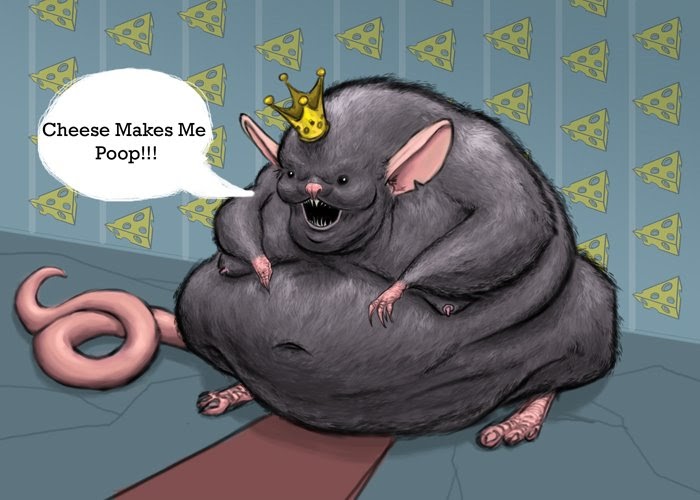 Otherwise, the owner will become a foster mother for the kids.
Otherwise, the owner will become a foster mother for the kids.
Newborns should be kept in a box with felt or felt cloth to maintain a constant temperature at 38-39With , you can put a water container or an electric heating pad under the bottom to prevent overheating of the pups.
Before and after feeding, it is necessary to massage the tummies and the genital area of the anus of rat pups with a moist warm swab to stimulate intestinal peristalsis, the feces must be immediately removed from the nest.
Feeding newborn rat pups is a rather complicated procedure. For feeding, use pet milk replacer or dry soy infant formula diluted with goat's milk. The mixture can be diluted with water with the addition of condensed milk. The liquid mixture is stored for no more than a day in the refrigerator.
It is best to feed babies with warm formula using an insulin syringe with an intravenous catheter at the end, you can try to make a nipple from a piece of cloth. All items after each feeding are subject to mandatory boiling. To prevent the development of enteritis, after each feeding, each baby is given a drop of Biovestin.
All items after each feeding are subject to mandatory boiling. To prevent the development of enteritis, after each feeding, each baby is given a drop of Biovestin.
Weekly feeding of rat pups:
- 1 week . In the first week of life, the cubs are fed with a liquid diluted mixture every 2-3 hours during the day and 1-2 times at night; by the end of the week, dry ground grain feed can be added to the mixture;
- Week 2 . In the second week, grain rat food is diluted with a mixture to the state of liquid sour cream, babies are fed every 4 hours during the daytime and 1 time at night;
- 3rd week . On the third week, feed with the mixture is poured into a bowl for rat pups, night feeding is canceled;
- 4 week . At the beginning of the fourth week, babies are transferred completely to dry feeding.
In a month, rat pups eat adult food, you can drink goat or cow milk from a pipette for up to 5-6 weeks. Small animals are fed with a dry grain mixture, cottage cheese, boiled fish and chicken, boiled chicken wings, apples, bananas, greens, oat and wheat sprouts, broccoli, boiled liver, chicken egg yolks can be given in small quantities. Mushrooms, tomatoes and cucumbers are not recommended for babies.
Small animals are fed with a dry grain mixture, cottage cheese, boiled fish and chicken, boiled chicken wings, apples, bananas, greens, oat and wheat sprouts, broccoli, boiled liver, chicken egg yolks can be given in small quantities. Mushrooms, tomatoes and cucumbers are not recommended for babies.
In the case when the litter is fed by the mother, it is necessary to feed the babies by the end of the third week. The rat pups remain on breastfeeding and begin to eat grain feed, cereals, baby food, curds, boiled meat and greens with the female from the common feeder.
Newborn rat pups are small defenseless creatures that require special careful care and attention from their mother and owner. You need to treat them like your children, feed, care for and cherish. Rat babies at the age of one month are a funny, perky flock of smart and affectionate animals, communication with which brings only a lot of pleasure.
Feeding rat pups | Ratmania
Unfortunately, sometimes it happens that a rat refuses to feed newborns or little grown up rats. The reason for this behavior can be maternal health problems, stress, unsuitable conditions of detention, lack of milk, underdevelopment of the mammary glands, etc. It also happens that orphaned rats (for example, wild ones) get to a person or the mother dies after childbirth. Regardless of the specific situation, the owner should start hand-feeding the pups as soon as possible, as without food, their chances of survival are dwindling with every passing minute. The publication of the forum member Tanya_B is well suited as an algorithm of action.
The reason for this behavior can be maternal health problems, stress, unsuitable conditions of detention, lack of milk, underdevelopment of the mammary glands, etc. It also happens that orphaned rats (for example, wild ones) get to a person or the mother dies after childbirth. Regardless of the specific situation, the owner should start hand-feeding the pups as soon as possible, as without food, their chances of survival are dwindling with every passing minute. The publication of the forum member Tanya_B is well suited as an algorithm of action.
What do you need to have on hand?
Subclavian catheter is vital, without it it is very difficult to feed pups. For feeding, the needle is removed, the catheter is carefully cut to a length of about 1.5 cm - this ensures the convenience of feeding and ensures that there are no injuries if the rat suddenly jerks sharply.
Heating pad saves a lot of energy. Lack of sleep guaranteed in the first days makes the use of a conventional heating pad painful and dangerous, because. precious time is spent pouring and collecting water at the desired temperature, screwing the cork securely, installing it, etc. There is always a chance of overheating. A heating pad under the edge of the carrier saves a lot of time and effort and allows you to concentrate on the pups themselves. Attention! It should only be warm so that the rat pups do not overheat!
precious time is spent pouring and collecting water at the desired temperature, screwing the cork securely, installing it, etc. There is always a chance of overheating. A heating pad under the edge of the carrier saves a lot of time and effort and allows you to concentrate on the pups themselves. Attention! It should only be warm so that the rat pups do not overheat!
Terrarium carrier is the most convenient. By providing ventilation, it allows you to maintain sufficient moisture, which is necessary for the health of the skin of babies.
The carrier should be covered with a thin layer of slightly moistened wipes so that they "stick" to the floor - so the pups will not burrow under them, but at the same time they will be able to fully crawl - a slippery floor can lead to curvature of the babies' legs. You can make a semblance of a nest from finely torn napkins so that the rat pups are more comfortable.
What to feed the rat pups
The first two or three feedings can be fed with pure goat milk - the fatter it is, the better.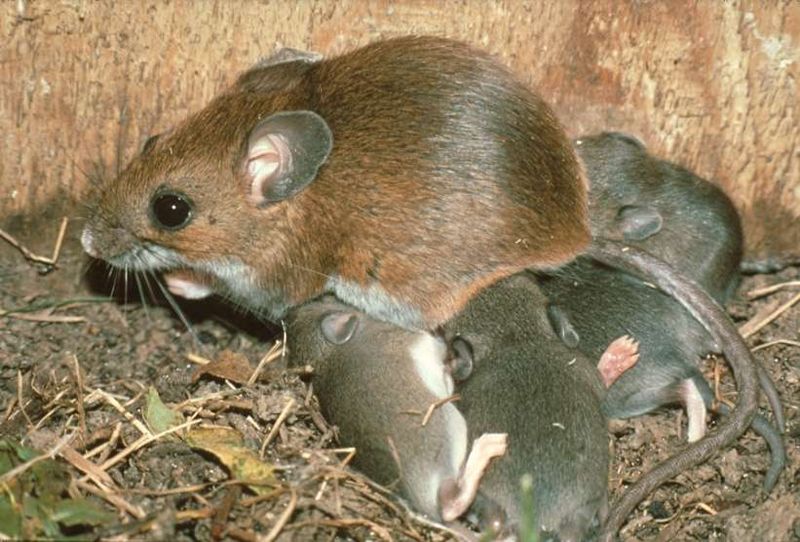 Gradually, during the day, the dry milk mixture is mixed into the milk. The concentration per milliliter of liquid is gradually brought to double the human concentration (see the instructions for the mixture), and goat's milk is used instead of water. Rats well distinguish the taste of milk, a mixture mixed with water, they eat reluctantly. The finished mixture can be kept in the refrigerator in a well-closed jar for up to a day.
Gradually, during the day, the dry milk mixture is mixed into the milk. The concentration per milliliter of liquid is gradually brought to double the human concentration (see the instructions for the mixture), and goat's milk is used instead of water. Rats well distinguish the taste of milk, a mixture mixed with water, they eat reluctantly. The finished mixture can be kept in the refrigerator in a well-closed jar for up to a day.
After each feeding, rat pups are given a drop of biovestin — just dripped onto the mouth from the tip of the catheter or fed with the catheter. Rats love the taste of it. If Biovestin is not available, other probiotics can be used, but Biovestin has been tested. This is a reliable insurance against enteritis. Rats not receiving bifidus cultures are prone to painful and sometimes fatal bloating.
Preparing for feeding
Before feeding, take the baby rat out of the carrier, gently massage the groin with a damp cotton swab in a circular motion so that it pees and poops. Rat pups can poop and not every feeding. The poop should be dark orange in color. Too dark poop and bright yellow urine is a sign that the mixture is too thick, poop consisting of light yellow lumps indicates excessive fat in the mixture. In both cases, it is necessary to dilute the mixture with goat's milk.
Rat pups can poop and not every feeding. The poop should be dark orange in color. Too dark poop and bright yellow urine is a sign that the mixture is too thick, poop consisting of light yellow lumps indicates excessive fat in the mixture. In both cases, it is necessary to dilute the mixture with goat's milk.
For feeding you will need: a syringe and a catheter scalded with boiling water, warmed formula, a glass of hot water set aside from the feeding area, prepared pieces of toilet paper.
How to feed rat pups
Feeding is all about being careful. Under no circumstances should you be in a hurry. The rat cub is held with the left hand, the head is securely held with the thumb and forefinger. The legs of the rat can be placed on the surface. With the right hand, we take a syringe with a catheter put on it and the collected mixture. The mixture in the syringe cools down quickly, and babies are much more willing to eat the mixture no colder than 40 C, so the syringe can be lowered into a glass of hot water for a couple of seconds to warm it up. We estimate the temperature by dripping on the wrist, a drop should be perceived as slightly warm . The syringe should be held in the same way as a fountain pen is held when pressing the button to extend the rod. Be sure to practice pushing the plunger very slowly. By the way, the simplest insulin syringes are convenient for feeding (usually they are green), in which the plunger is one-piece, without a rubber gasket - their stroke is smoother, and they are more hygienic with repeated use.
We estimate the temperature by dripping on the wrist, a drop should be perceived as slightly warm . The syringe should be held in the same way as a fountain pen is held when pressing the button to extend the rod. Be sure to practice pushing the plunger very slowly. By the way, the simplest insulin syringes are convenient for feeding (usually they are green), in which the plunger is one-piece, without a rubber gasket - their stroke is smoother, and they are more hygienic with repeated use.
Insert the catheter very carefully into the baby's mouth and begin to press very gently on the plunger. At the first feedings, the little rat will champ and spit. We wait. Any excess milk is immediately wiped with napkins. Rats can often choke. In this case, milk enters the nose, and if nothing is done, rapid suffocation and death are possible. When blisters appear from the nose, we immediately stop feeding, take a prepared piece of toilet paper and pinch the baby by the nose. We pinch quite hard, until it squeaks. The rat pups do not know how to roam themselves, but they squeak with their nose, and when they squeak, the milk is sneezed out. We are waiting for a clean, not hoarse squeak. If this does not help and the little rat continues to choke, feel free to pinch his ass - it hurts more, but it saves the baby. Only after making sure that the rat is breathing freely, we continue feeding.
We pinch quite hard, until it squeaks. The rat pups do not know how to roam themselves, but they squeak with their nose, and when they squeak, the milk is sneezed out. We are waiting for a clean, not hoarse squeak. If this does not help and the little rat continues to choke, feel free to pinch his ass - it hurts more, but it saves the baby. Only after making sure that the rat is breathing freely, we continue feeding.
After several feedings, the rat will begin to recognize the syringe, greeting it and the hand with a joyful “tink-tink-tink!” and eat more willingly. At this stage, a new problem arises: the rat sucks too greedily and swallows air. To prevent this from happening, you need to hold the corners of the rat's mouth with your fingers (it's easier to show than to explain in words, but in practice the necessary technique is quite clear). “Separated” feeding also helps - if there are several rats, first, after all the preliminary procedures, each rat is given a small drop of milk, and full feeding goes on for the second round. The first drop slightly reduces the hungry excitement of the kids, and they eat more carefully. If the rat is alone, then a drop is given, a pause of about half a minute is expected, and feeding continues.
The first drop slightly reduces the hungry excitement of the kids, and they eat more carefully. If the rat is alone, then a drop is given, a pause of about half a minute is expected, and feeding continues.
Some pups learn to stick to the catheter and eat very quickly - the tummy fills with milk in a matter of seconds. It is very tempting for a breadwinner exhausted by lack of sleep, but this technique is very dangerous - a rat can choke very badly. Therefore, all the time, constantly and diligently remember caution and moderation.
A satiated rat, as a rule, gradually loses interest in the syringe, but one should not focus only on appetite. The best clue is a transparent tummy, through which the stomach is perfectly visible. Sufficient fullness is when the longitudinal (along the body) width of the white stripe is approximately two-thirds of the transverse width. The amount of the mixture eaten is difficult to estimate, because. much of the mixture is spilled. According to my rough estimates, rat pups up to 4 days old eat somewhere around 0.2-0.3 milliliters of the mixture per feeding, week-old rat pups - 0.5 ml each, ten-day old ones - up to a milliliter. Appetite depends on the size, well-being of rat pups and on the concentration of the mixture.
According to my rough estimates, rat pups up to 4 days old eat somewhere around 0.2-0.3 milliliters of the mixture per feeding, week-old rat pups - 0.5 ml each, ten-day old ones - up to a milliliter. Appetite depends on the size, well-being of rat pups and on the concentration of the mixture.
As I have already mentioned, a frequent scourge of artificers is aerophagy, the swallowing of air. The air-filled stomach is clearly visible through the transparent tummy. If the air bubble occupies more than half of the filled stomach, you should take a break in feeding the baby, either postponing feeding for a couple of hours, or skipping it. espumizan helps a lot - about 0.01-0.03 ml of suspension is soldered to the rat with the help of a catheter.
Rat pups older than a week often have intestinal distention, especially if the pup has swallowed a lot of air before. In this case, espumizan should be given at the dosage mentioned above. If it lasts more than 2-3 feedings, the rat should be transferred to pure goat's milk with the addition of a large amount of Biovestin (0. 05 ml or more).
05 ml or more).
Once every 1-2 days, you can give rat pups a small drop (the size of a millet seed) of Kinder-biovital baby vitamin gel - rat pups love it very much.
After each (or every second) feeding, the rat pup should be wiped with a damp cotton from dirt and poop, dried with a napkin and smeared with a moisturizing cream - bepanthen or any high-quality baby cream. When lubricating, you can take the opportunity to carefully massage the rat: wrinkle the fingers and tail, pull off the skin and ears - this greatly contributes to the rapid and proper development of the baby.
At about a week old, rat pups start teething. From this point on, you should carefully examine the gums at least once a day for the appearance of white plaque - thrush. Running thrush can lead to the fact that the rat will not be able to eat and will die. Thrush is treated, for example, by gently lubricating the gums with a solution of sodium tetraborate (in case of an overdose, it can poison the baby) or more modern children's drugs, but, as a rule, the use of biovestin insures the rat against its appearance.
The opening of the eye is a key stage in the development of an artificial rat. From this point on, dry baby cereals for the smallest children can be added to the mixture. Optimal - buckwheat or buckwheat with dried apricots. For feeding with a mixture with porridge, a catheter is not needed, you can simply feed from an insulin syringe without a needle. The mixture should initially have the consistency of heavy cream. Since the beginning of feeding with porridge, rat pups begin to grow rapidly. At some point, rat pups may try to eat porridge from a bowl on their own, but do not rush things - the first attempts lead to the fact that the entire rat pup is covered with a hard-to-wash crust of dried porridge, eventually losing almost all of the children's fluff (already liquid ). Rats from 2.5 weeks old can be given with caution the usual cereals, banana, meat food. The remains must be removed, because. musol dried crumbs of food, rat pups can choke. Three weeks old is a victory. From this age, you can transfer the artificial to an adult diet and accustom to a drinking bowl.
Nurse as an alternative
Despite the fact that the algorithm for feeding and nursing newborn rat pups is quite well-established and simple, you will not be able to feed rat pups better than a rat. Therefore, in the first days of feeding, it is worth trying to find a nurse for them - a nursing rat with children of about the same age, which can take a few more rats. Age is a very important factor. The closer it is, the higher the likelihood of a successful outcome.
There are two options for finding a wet nurse:
- you can look for a nursing rat in pet stores or bird markets and buy it out with your children. In this case, you will later have to attach both broods in good hands.
- you can look for a lactating rat on rat breeding resources from breeders or owners of a pet shop rat that has given birth. In this case, your rats will be raised in a different home and you will need to pick them up when they are 5 weeks old. You can try to find a feeder for rats in section "Help for rats" .





